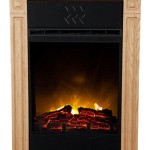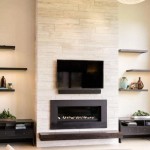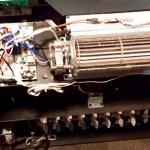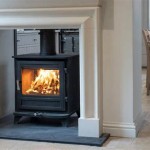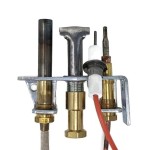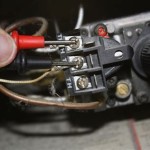Horizontal Venting for Gas Fireplaces: A Comprehensive Guide
Gas fireplaces offer a convenient and aesthetically pleasing alternative to traditional wood-burning fireplaces. A critical aspect of their installation is the venting system, which safely removes combustion byproducts from the home. Horizontal venting is a popular option, particularly when vertical venting is impractical or impossible. This article provides a detailed overview of horizontal gas fireplace venting, covering its principles, installation considerations, safety aspects, and maintenance requirements. Understanding these factors is crucial for homeowners and installers alike to ensure the safe and efficient operation of a gas fireplace.
The fundamental purpose of any gas fireplace venting system is to expel harmful gases, such as carbon monoxide, water vapor, and nitrogen oxides, away from the living space. These byproducts of combustion, if allowed to accumulate indoors, can pose serious health risks. Horizontal venting achieves this by directing the exhaust gases through a flue that exits the building horizontally, typically through an exterior wall. The vent pipe is then terminated with a vent cap or terminal, designed to prevent backdrafting and protect the system from weather elements.
Horizontal venting systems are commonly used in situations where vertical venting is not feasible. This may be due to architectural constraints, such as a lack of a suitable chimney or the presence of multiple stories. Renovated homes or apartments often benefit from horizontal venting, as it avoids the complexities and costs associated with chimney construction or modification. Furthermore, horizontal venting generally simplifies the installation process, reducing labor and material expenses compared to more complicated vertical systems.
Key Point 1: Understanding Venting Requirements and Codes
Before embarking on a horizontal venting installation, it is imperative to understand and adhere to all applicable building codes and manufacturer specifications. Gas fireplaces are regulated by national and local codes that dictate the types of venting materials permitted, the minimum distances from combustible materials, the required clearances from windows and doors, and other crucial safety parameters. Failure to comply with these regulations can result in hazardous conditions, building code violations, and potential insurance issues.
The National Fuel Gas Code (NFPA 54) is a widely recognized standard for gas appliance installations. This code outlines detailed requirements for venting systems, including the selection of appropriate vent pipe materials, the proper sizing of the vent, and the necessary clearances to combustibles. Local building codes may incorporate or modify the NFPA 54 requirements, so consulting with the local building department is crucial to ensure compliance.
Manufacturers of gas fireplaces provide specific venting instructions for their products. These instructions typically specify the allowable vent pipe lengths, the maximum number of elbows or bends permitted in the vent run, and the recommended vent terminal location. It is essential to follow the manufacturer's instructions precisely, as deviations can compromise the safety and performance of the fireplace. In cases of discrepancies between manufacturer instructions and local codes, it is prudent to consult with a qualified professional to determine the most appropriate course of action.
Key Point 2: Installation Considerations for Horizontal Venting
Proper installation is paramount for the safe and efficient operation of a horizontal gas fireplace venting system. The process involves several critical steps, including selecting the appropriate venting materials, ensuring proper clearances, and sealing all connections securely. Careful attention to detail is essential to prevent gas leaks, carbon monoxide poisoning, and other potential hazards.
The choice of vent pipe material depends on the type of gas fireplace and the manufacturer's specifications. Direct vent fireplaces typically utilize a double-walled vent pipe, consisting of an inner pipe that carries the exhaust gases and an outer pipe that provides insulation and facilitates air intake. B-vent pipes, which are single-walled, are suitable for natural draft fireplaces where the combustion air is drawn from the room. The selected vent pipe must be compatible with the fireplace and certified for gas appliance venting.
Maintaining proper clearances from combustible materials is crucial to prevent fires. Vent pipes generate significant heat during operation, and if they come into direct contact with flammable materials, such as wood framing or insulation, a fire could result. Building codes specify minimum clearances to combustibles, which vary depending on the type of vent pipe and the surrounding materials. These clearances must be strictly adhered to during installation.
Sealing all vent pipe connections securely is essential to prevent gas leaks and ensure proper venting. Vent pipes are typically joined together using a slip-fit or locking mechanism. All connections must be tightly sealed with high-temperature sealant or tape specifically designed for gas fireplace venting. A thorough inspection of all connections is necessary to confirm that they are leak-free and properly secured.
Key Point 3: Safety and Maintenance of Horizontal Venting Systems
Safety is the primary concern when dealing with gas fireplaces and their venting systems. Regular maintenance and inspections are essential to ensure the continued safe and efficient operation of the fireplace. Homeowners should be aware of potential warning signs and take proactive steps to address any issues promptly.
Carbon monoxide detectors are an indispensable safety measure in any home with a gas fireplace. These detectors provide an early warning of carbon monoxide buildup, allowing occupants to evacuate the premises and seek medical attention if necessary. Carbon monoxide detectors should be installed in accordance with manufacturer instructions and tested regularly to ensure they are functioning properly.
Annual inspections of the venting system are recommended to identify any potential problems. A qualified technician can inspect the vent pipes for signs of corrosion, damage, or blockage. The technician can also check the vent terminal for debris accumulation and ensure that it is properly sealed against weather elements. Any deficiencies identified during the inspection should be addressed promptly to prevent safety hazards.
Proper ventilation of the area surrounding the gas fireplace is also important. The fireplace should not be obstructed by furniture or other objects that could impede airflow. Adequate ventilation helps to ensure that the fireplace receives sufficient combustion air and prevents the buildup of harmful gases.
Gas Fireplace Venting Explained Heat Glo

What Are The Best Ways To Vent A Gas Fireplace Zoroast
Gas Fireplace Venting Explained Heat Glo

Icc Direct Vent Gas Venting Horizontal Termination Starter Kits

Vkg 58 Direct Vent Ground Floor Horizontal Square Kit Vkg58 J3021

What Are The Best Ways To Vent A Gas Fireplace Zoroast

Icc Direct Vent Gas Venting Horizontal Terminations

What Are The Best Ways To Vent A Gas Fireplace Zoroast

Icc Direct Vent Gas Fireplace Vertical Termination Starter Kits

Kingstman Marquis Horizontal Vent Termination Kit Zdvhsk


